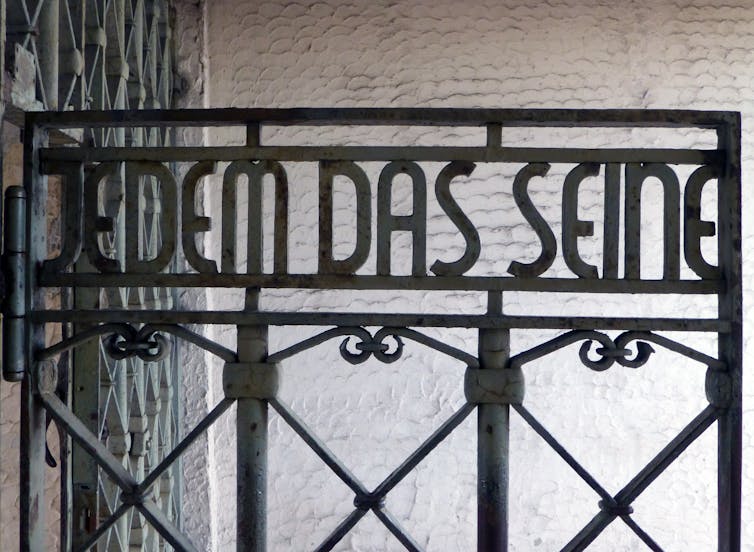Unfortunately, I will not see Germany: Memories of a Nation at the British Museum because it closes this weekend – and I live in Perth, Australia. As a result, I am unable to speak about my personal response to the objects curator Neil MacGregor selected to reflect on the history of Germany.
That is a loss, but I was able to read the book that accompanies the exhibition and to listen to the 30 podcasts he created for the BBC.
It is a loss heightened by that experience of reading and listening to MacGregor unpack with easy erudition the meanings and resonances of those objects, the lives they echo and their significance to us now in the light of history.

Twenty-five years after the Berlin Wall fell, the entity we know as Germany is revealed in all its complexity through a brilliantly eclectic selection of objects, artworks, buildings and ephemera. Individually and collectively they reveal well-known facts from fresh perspectives and provide access to unfamiliar stories.
The horror of Nazi atrocities is told through the gate at Buchenwald, crafted by the Bauhaus designer Franz Ehrlich.
Ehrlich was forced to construct the main gate at the camp with the words Jedem das Seine (To Each What They are Due) included in the design; the words to be read from the inside. This ideal of justice, a German translation of the Roman Law maxim Suum Cuique, was a horrific re-interpretation of “justice for all”, mangled to mean, “you have no rights”.

In an extraordinary act of defiance, Ehrlich chose a font that echoed his work at the Bauhaus, the art institution the Nazis had closed in 1933. This degenerate font, from the Nazi perspective, symbolises resilience in the face of oppression. MacGregor writes:
It can be read as an assertion of dignity, eloquent and powerful, against everything this camp — and all camps — stood for.
MacGregor’s great skill is to unleash the power of these objects through his perceptive interpretations of their role in the lives of German citizens then and now. Instead of selecting famous battles or highlighting the lives of kings or politicians, he focuses on objects that have been made or manufactured by individuals, objects that are embedded within the social context of their community. It is his ability to reveal and unravel that context that allows these objects to speak so eloquently and to connect with us so profoundly.
The subtitle of the project encapsulates this idea. The objects he has selected speak to us through the memories that have aggregated around them. The “Memories of a Nation” MacGregor alludes to are embodied in these objects – and the more we know about them and the lives of the people associated with them, the more powerful their voice.
Foremost among these articulate objects is Ernst Barlach’s Hovering Angel from Güstrow Cathedral, which not only encapsulates the horrors of the first world war but accumulates memories of the Third Reich and then the tensions during the Cold War and finally embraces the reunited Germany.

Modelled on the face of the great German artist Käthe Kollwitz, melted down by the Nazis to make machines of war, recast in secret during the Nazi regime and hung in Cologne after the war, and then a cast made as an act of shared remembrance and donated by the West to the GDR in 1981, the Angel is so redolent with meaning it has come to symbolise the hopes for a new Germany. As Paster Höser from Güstrow Cathedral explains:
While the sculpture is away, we decided not to put up any replacement, but to leave a void. That void and our response to it will be part of the London exhibition. I hope we can use it to address the questions it raises: are we ready to assume responsibility, are we willing to put ourselves on the line for the cause of reconciliation?
In the exhibition, the podcasts and the accompanying book MacGregor delicately weaves his way through 500 years of history, beginning with the Holy Roman Empire and ending with Gerhard Richter’s painting of his daughter Betty looking back over her shoulder at one of her father’s early works. MacGregor ponders on this painting as a metaphor for Germany’s future.
Betty inhabits a space still animated by her father’s works, although his painting is no longer discernible in the dark wall behind her, just as all Germans live in the presence — growing fainter, but still commanding — of the deeds of their predecessors. What Betty makes of her father and his generation, we cannot know. But, in a moment, this young woman will turn to face us, and the future.
MacGregor’s perceptive insights prepare us for possible futures, better informed about the past through our engagement with these eloquent objects.
Listen to Neil McGregor’s Germany: Memories of a Nation here.

